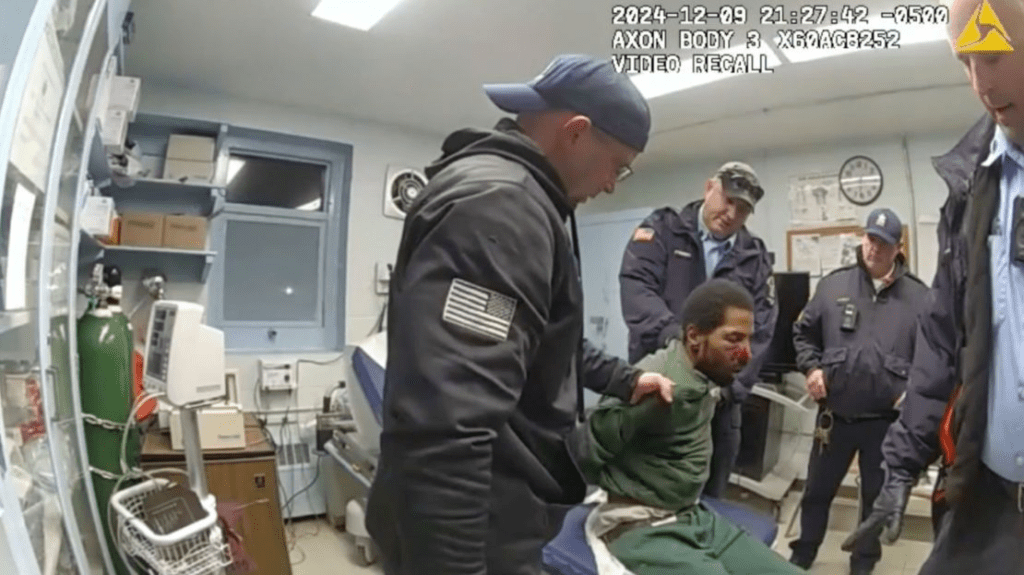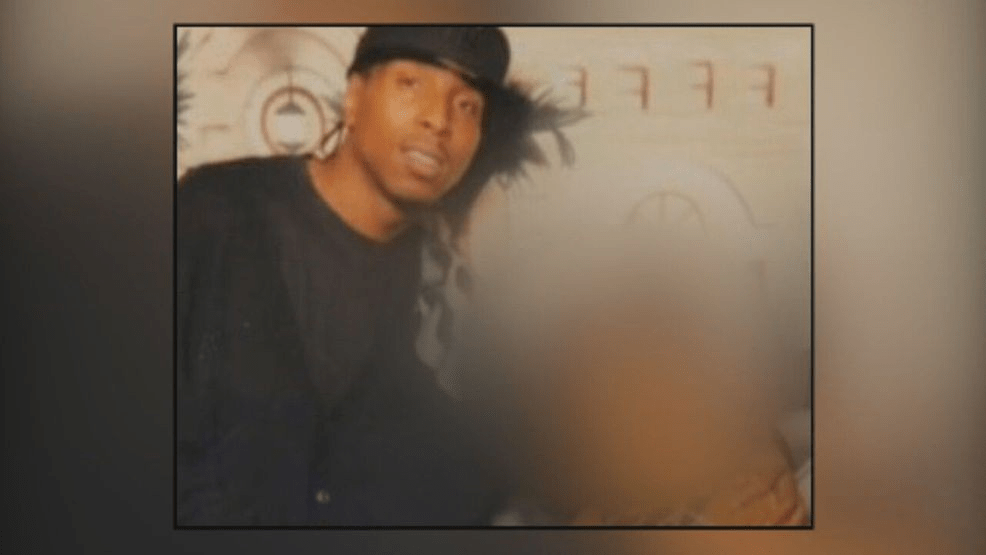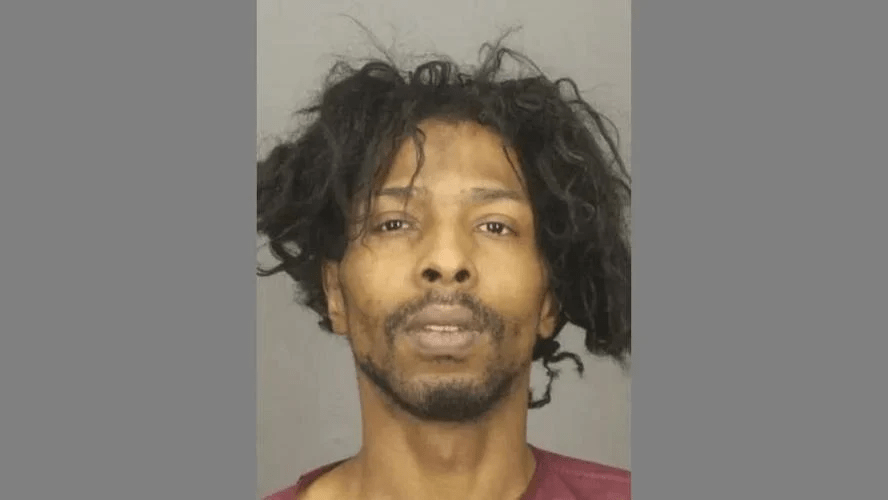
Robert Brooks’ Tragic Death Highlights Brutality in Correctional Facilities
Introduction
On December 9, 2024, a harrowing incident at New York’s Marcy Correctional Facility left 43-year-old inmate Robert Brooks fatally beaten by correctional officers. Disturbing body camera footage revealed that Brooks, who was handcuffed, was subjected to relentless punches, kicks, and stomps by multiple officers. This tragic event, which resulted in Brooks’ death the following day, has cast a harsh spotlight on the conditions within correctional facilities and raised urgent questions about accountability, systemic abuse, and the need for reform.
In this article, we will examine the details of the incident, the response from authorities, the broader implications for the correctional system, and the growing demands for justice and systemic change.
(Facebook: Like, X: Follow, Telegram: Join us)
The Fatal Incident: What Happened to Robert Brooks?

Robert Brooks, serving a 12-year sentence for first-degree assault since 2017, was involved in an altercation with correctional officers on December 9, 2024. According to the body camera footage released by Attorney General Letitia James, Brooks was handcuffed during the incident, rendering him defenseless against the assault.
Details of the Beating
- Officers repeatedly punched, kicked, and stomped on Brooks, despite his restrained state.
- The assault continued even as Brooks lay motionless, further raising concerns about excessive force and intent.
- Brooks succumbed to his injuries the following day, with the medical examiner citing asphyxia due to neck compression as the cause of death.
Historical Context

Marcy Correctional Facility has faced previous allegations of brutality and racism, creating a troubling backdrop for this incident. Activists argue that Brooks’ death is not an isolated case but rather a symptom of a systemic problem within correctional institutions.
The Aftermath: Investigations and Actions Taken
Official Response

Governor Kathy Hochul acted swiftly, ordering the termination of 14 staff members involved in the incident, including correctional officers, sergeants, and a nurse. The Department of Corrections and Community Supervision (DOCCS) also launched an internal investigation, leading to the suspension of 13 staff members and the resignation of one.
Condemnation by Advocacy Groups
The New York State Correctional Officers and Police Benevolent Association (NYSCOPBA) condemned the actions of the officers involved, emphasizing that such behavior does not reflect the values of the broader membership. However, civil rights groups argue that more needs to be done to address systemic abuse and ensure accountability.
Impact on the Brooks Family and Inmate Advocacy

For Brooks’ family, the loss is devastating. His relatives have called for justice and an independent investigation into the incident. Advocacy groups have also highlighted the need for structural changes within the correctional system to prevent similar tragedies.
A Mother’s Grief
Speaking at a press conference, Brooks’ mother said:
“My son was supposed to serve his time and come home to his family, not die at the hands of those entrusted with his care.”
Demands for Accountability
Civil rights leaders, including Rev. Al Sharpton, have demanded criminal charges against the officers involved, arguing that administrative actions alone are insufficient to address the severity of the incident.
Systemic Issues in Correctional Facilities

The death of Robert Brooks underscores deeper issues within the correctional system, including:
Excessive Use of Force
The violent assault on Brooks, despite his restrained state, highlights the unchecked use of force by some correctional officers. Advocacy groups argue that systemic changes are needed to address the culture of impunity that allows such behavior to persist.
Racial Disparities
Marcy Correctional Facility, like many others, has faced allegations of racism. Activists point to racial disparities in the treatment of inmates as a significant factor in incidents of violence and abuse.
Mental Health and Rehabilitation Neglect
Correctional facilities often fail to provide adequate mental health services and rehabilitation programs, exacerbating tensions between inmates and staff.
Calls for Reform and Justice
The Brooks case has intensified calls for comprehensive reform in correctional facilities. Key recommendations include:
Body Camera Implementation and Transparency
- Expanding the use of body cameras to all correctional officers.
- Ensuring footage is reviewed regularly to detect and address abusive behavior.
Training and Accountability
- Enhancing training programs for officers, focusing on de-escalation and inmate rights.
- Implementing independent oversight bodies to investigate allegations of abuse.
Policy Changes
- Establishing zero-tolerance policies for excessive force.
- Mandating regular audits and inspections of correctional facilities to ensure compliance with ethical standards.
Civil Rights Leaders Speak Out
Prominent civil rights leaders have weighed in on the Brooks case, underscoring the broader implications for social justice and human rights.
Rev. Al Sharpton remarked:
“Robert Brooks’ death is a tragic reminder of the systemic failures in our correctional system. We must demand justice, not just for him but for all inmates who suffer under these conditions.”
FAQs
What happened to Robert Brooks?
Robert Brooks, a 43-year-old inmate, died after being brutally beaten by correctional officers at Marcy Correctional Facility while he was handcuffed.
What actions have been taken against the officers involved?
Governor Kathy Hochul ordered the termination of 14 staff members, including officers and a nurse. Additionally, DOCCS has suspended 13 staff members, and one resigned.
What was the cause of Brooks’ death?
The medical examiner determined that Brooks died from asphyxia due to neck compression.
Why is Marcy Correctional Facility under scrutiny?
The facility has a history of allegations involving brutality and racism, raising concerns about systemic abuse and lack of accountability.
What reforms are being proposed?
Advocates are calling for enhanced training, independent oversight, expanded use of body cameras, and zero-tolerance policies for excessive force.
Conclusion
The tragic death of Robert Brooks at Marcy Correctional Facility has become a rallying point for advocates seeking justice and systemic reform. While the swift actions taken by New York authorities demonstrate a commitment to accountability, this incident highlights the urgent need for broader changes within the correctional system.
As investigations continue, the legacy of Robert Brooks serves as a stark reminder of the human cost of systemic failures. It is a call to action for society to demand accountability, enforce reforms, and ensure that no inmate suffers a similar fate.
Do Follow For More News : DailyForesight



